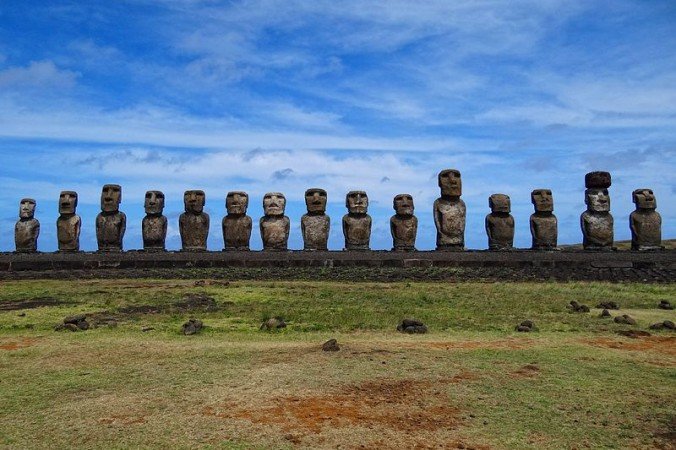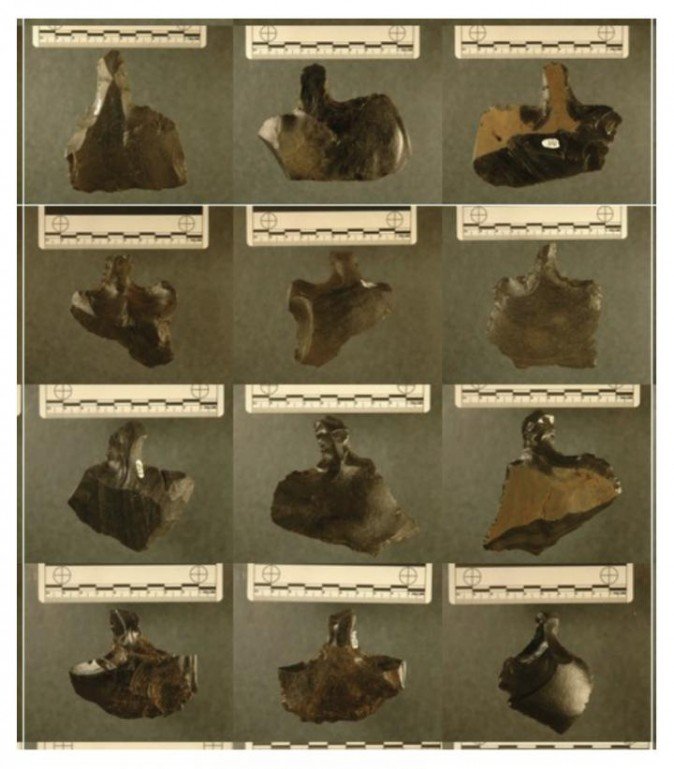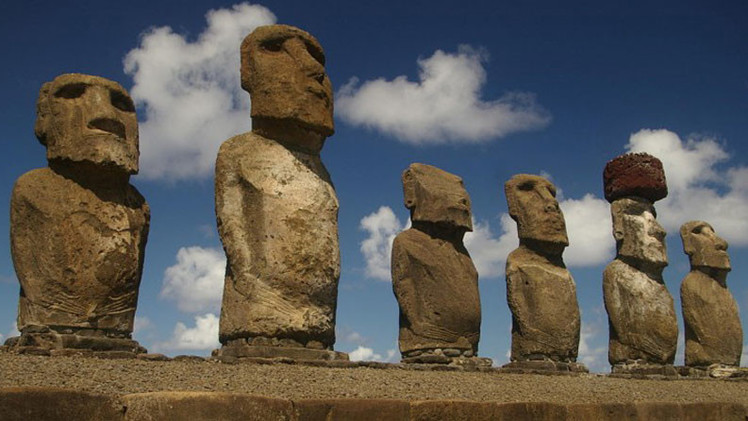
© Bjørn Christian Tørrissen
The ancient civilization that inhabited
Easter Island wasn't destroyed by warfare, according to a recent study, contrary to what some researchers believe.
Researchers from Binghamton University analyzed spear-like blades of obsidian, known as mata'a, that were scattered about the island.
They found that the mata'a were not used for violence, saying the shapes are inconsistent and different from other recovered weapons. The mata'a were more likely all-purpose tools, the study found."We found that when you look at the shape of these things, they just don't look like weapons at all," Carl Lipo, professor of anthropology at Binghamton University, said in a statement.
The traditional theory of the Rapa Nui people who inhabited the island for hundreds of years is that they ran out of resources on the island, which resulted in war, leading to their demise. What supported this theory are thousands of obsidian, triangular objects that are found on the surface, called mata'a. Due to their large numbers and the fact that they're made of sharp glass, many thought they were weapons of war.
However, Lipo found that the mata'a were different from other traditional weapons, and his team noted that they would have been made poor weapons.
"When you can compare them to European weapons or weapons found anywhere around the world, when there are actually objects used for warfare, they're very systematic in their shape. They have to do their job really well. Not doing well is risking death," he said.

© Carl Lipo, Binghamton University)The mata’a
He added: "You can always use something as a spear. Anything that you have can be a weapon. But under the conditions of warfare, weapons are going to have performance characteristics. And they're going to be very carefully fashioned for that purpose because it matters...You would cut somebody [with a mata'a], but they certainly wouldn't be lethal in any way."
Lipo then said
the idea of Easter Island's inhabitants killing one another off before Europeans arrived is actually a late European interpretation of the record, and it isn't an actual archeological event."What people traditionally think about the island is being this island of catastrophe and collapse just isn't true in a pre-historic sense. Populations were successful and lived sustainably on the island up until European contact," he said.
And the mata'a, he said, are actually farming and cultivation tools."We've been trying to focus on individual bits of evidence that support the collapse narrative to demonstrate that really there's no support whatsoever for that story," he said.
"Sort of a pillar of the broader study is the fact that this is an amazing society that really was successful. It just doesn't look like success to us because we see fields that are rock, we think catastrophe, and in fact it's actually productivity."
Europeans arrived on the remote South Pacific island in 1722, and at the time, it only had around 2,000 to 3,000 people on it.
European diseases and Peruvian slavery decimated the population, reducing it to as little as 111 by 1877.The island, which is now a territory of Chile, has 5,800 residents, about 60 percent of which are descendants of the Rapa Nui.
The Rapa Nui are believed to have settled on Easter Island, coming from other Polynesian islands, between 700 AD and 1100 AD.
The iconic moai statues are believed to have been erected between the years of 1250 AD and 1500 AD. The tallest moai statue erected is 33 feet high and weighed 82 tons.

© Wikimedia
Blaming the white man again I see.
The referred to article never provides definitive proof, instead is uses the favorite words and phrases of all incomplete studies like. "Believes" "this evidence strongly supports" "One of the pieces of evidence used to support this theory" and finally "We've been trying to focus on individual bits of evidence that support the collapse narrative to demonstrate that really there's no support whatsoever for that story," he said. "Sort of a pillar of the broader study is the fact that this is an amazing society that really was successful. It just doesn't look like success to us because we see fields that are rock, we think catastrophe, and in fact it's actually productivity."
Yet after carefully reading the article a few things stand out. 1000 of the spear head like objects have been found but only 400 have been studied and compared to Europeans weapons. No other evidence besides the spear heads are brought up and the article clearly words it as if they walked in fully expecting all the evidence they've produced to line up with their theory.
And before any SJW cry out racist, remember that we all know science can't be trusted not to alter the evidence or cheery pick results to suite the narrative of the researchers.